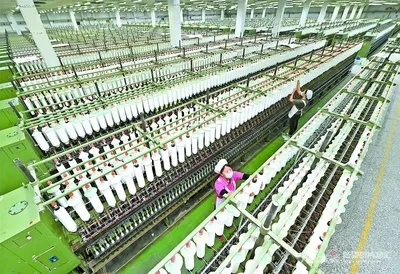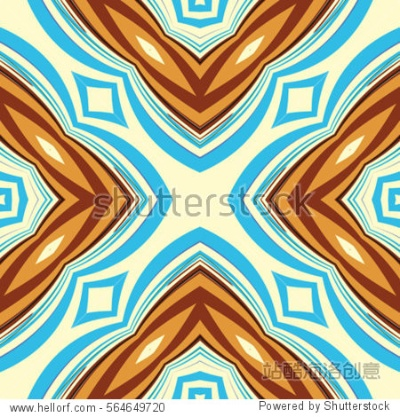Mastering Techniques for Textile Pattern Design:Strategies and Examples
: Mastering Techniques for Textile Pattern Design,Abstract: This article explores the fundamental techniques and strategies for designing textile patterns, focusing on both the theoretical understanding and practical application. By delving into the intricacies of pattern design, this paper aims to provide a comprehensive guide for designers seeking to enhance their craft.,The first section discusses the importance of pattern design in textile art, outlining its role in creating visual impact and conveying specific messages or themes. The article then introduces the basic principles of pattern design, such as symmetry, repetition, and contrast, emphasizing the significance of these concepts in achieving harmony and balance within the finished design.,The second section delves into the key techniques and methodologies employed by successful textile pattern designers, including the use of geometric forms, organic shapes, and abstract motifs. The article also explores the role of color theory in enhancing the aesthetic appeal of textile patterns, providing examples and explanations of how various colors can be used to create unique and captivating designs.,Finally, the article concludes with practical tips and advice for beginners and experienced designers alike, highlighting common pitfalls to avoid and suggesting innovative ways to approach pattern design. Through this engaging and informative exploration of the art form, we hope to inspire readers to embrace the possibilities of pattern design and unlock their creative potential.,Keywords: Textile Pattern Design, Strategies, Techniques, Examples
In the realm of textile design, where creativity meets functionality, pattern design is often the cornerstone of a piece. It's not just about aesthetics; it's about conveying a message, telling a story, or evoking a mood. That said, achieving a successful design requires an understanding of both artistic principles and technical know-how. Let's delve into some of the key techniques and examples that can help you create captivating textile patterns.
Understanding the Basics of Grid Systems
Before diving into more advanced techniques, it's essential to understand the basics of grid systems. These are the frameworks used by designers to arrange elements on a fabric surface, ensuring consistency and coherence across the entire piece. There are different types of grid systems:

- Rectangular Grid: A square grid with equal sides, perfect for creating balanced designs.
- Horizontal Grid: A series of horizontal lines, ideal for creating linear patterns.
- Vertical Grid: A series of vertical lines, perfect for layering or creating depth in a design.
- Diagonal Grid: A mix of diagonal lines that add a dynamic element to a design.
Creating Balance and Contrast
One of the most fundamental principles in design is balance. To achieve it, consider the following points:
- Equal Spacing: Evenly distribute elements across the grid to avoid any one part dominating the others.
- Symmetry: If possible, create designs that are mirror images of each other. This creates a sense of harmony.
- Contrast: Use contrasting colors, shapes, or sizes to draw attention to certain areas and create interest.
- Repetition and Variation: Use repeating elements to create a consistent look while varying the details to keep things interesting.
Applying Color Theory
Color plays a crucial role in textile design. Here's a breakdown of how color theory can be applied:
- Primary vs. Secondary Colors: These are the basic colors in the rainbow. For example, red, orange, and yellow make up primary colors, and they can be mixed together to create secondary colors like green, blue, and purple.
- CMYK vs. RGB: Traditionally, textiles were made using CMYK (cyan, magenta, yellow, key), but modern printing methods allow for RGB (red, green, blue) color representations as well.
- Warm vs. Cool Colors: Warm colors tend to be brighter and have a positive energy, while cool colors are more muted and have a calming effect.
- Saturation and Hue: Saturation refers to how vivid or dull the color appears; higher saturation values result in brighter colors. Hue refers to the color itself, from red to violet, with white representing the purest hue.
Using Layering Techniques
Layering involves placing different colored elements on top of each other to create depth and dimensionality. Here's how you can use it effectively:
- Differential Shading: Adding variations in tone or intensity between layers gives your design depth and texture.
- Texture Coated Layers: Applying layers with different textures can add complexity and texture to your design.
- Faux Finishing: Using layers of fabric to simulate different materials or finishes can create unique visual effects.
Incorporating Geometric and Pattern Elements
Geometric shapes are an excellent way to add structure and rhythm to your design. Here's how you can incorporate them:
- Regular and Irregular Shapes: Use circles, squares, triangles, and more to create a consistent layout.
- Division of Lines: Break lines down into sections or angles to create a more dynamic feel.
- Pattern Elements: Introduce repeating patterns or geometric forms to create a repetitive yet intriguing design.
Embracing Creative Freedom
Ultimately, designing a successful textile pattern involves being creative and open to experimentation. Don't be afraid to try new techniques or approaches that may seem unconventional at first. The key is to find what works best for your project and let your imagination run free.
Here's a table summarizing some common techniques used in textile pattern design:
| Technique | Explanation |
|---|---|
| Grid System | Used as a guide for arranging elements on the fabric surface. |
| Balance & Contrast | Maintain a consistent look while adding visual interest through contrast and balance. |
| Color Theory | Applying color principles such as primary vs. secondary, warm vs. cool, and saturation & hue to create visual interest. |
| Layering Techniques | Adding layers of differing textures, shades, or patterns to create depth and dimensionality. |
| Geometric and Pattern Elements | Using regular and irregular shapes, division of lines, and repeating patterns to create a cohesive yet dynamic design. |
Remember, every great design starts with a clear vision and a willingness to experiment. So take your time, step back from perfectionism, and let your creativity flow. With these techniques under your belt, you'll be well on your way to crafting beautiful textile patterns that truly stand out.
在纺织品图案设计中,构图技巧的运用至关重要,它不仅影响着图案的整体效果,还影响着消费者的视觉体验和情感反应,本文将探讨纺织品图案设计构图技巧的相关内容,并通过案例分析来说明其应用。

纺织品图案设计构图技巧概述
-
主题明确 在纺织品图案设计中,首先需要明确主题,即要表达的设计理念和风格,明确主题有助于后续构图技巧的运用。
-
比例与平衡 比例和平衡是构成图案构图的关键因素,在设计中,应保持主次分明,色彩搭配和谐,线条流畅,要注意不同元素之间的相互关系,确保整体构图和谐、美观。
-
运用视觉元素 在纺织品图案设计中,运用各种视觉元素,如线条、色彩、形状等,来构建图案的构图,这些视觉元素的选择和运用应与主题相符合,同时也要考虑消费者的审美需求。
案例分析
简约风格纺织品图案设计
在简约风格纺织品图案设计中,可以采用简洁明了的线条和色彩搭配,设计师可以运用几何图形作为主要元素,通过线条的疏密和色彩的对比来构建图案的构图,要注意色彩的搭配和谐,避免过于花哨或单调。
民族风纺织品图案设计
在民族风纺织品图案设计中,可以采用具有民族特色的图案和色彩搭配,设计师可以运用具有地方特色的花纹和图案,结合当地色彩进行设计,要注意不同地域文化的差异,确保设计的文化内涵和地域特色得到体现。
构图技巧实例说明
使用表格进行说明 以下是纺织品图案设计构图技巧的实例说明表格:
| 构图技巧要点 | 具体说明 |
|---|---|
| 明确主题 | 设计主题应与消费者需求相符合 |
| 比例与平衡 | 主次分明,色彩搭配和谐,线条流畅 |
| 运用视觉元素 | 选择具有代表性的视觉元素,如线条、形状、色彩等 |
| 简约风格纺织品图案设计 | 简洁明了的线条和色彩搭配 |
| 具体运用示例 | 主要采用几何图形作为主要元素,线条疏密有致,色彩对比鲜明 |
| 民族风纺织品图案设计 | 采用具有民族特色的图案和色彩搭配 |
| 具体运用示例 | 结合当地特色花纹和图案,运用当地色彩进行设计 |
纺织品图案设计构图技巧的运用对于提升图案的整体效果和消费者的视觉体验至关重要,在设计中,应明确主题,运用比例与平衡等构图技巧,同时也要注意运用各种视觉元素来构建图案的构图,通过案例分析可以看出,不同的设计主题和地域文化差异需要不同的构图技巧来体现,在实际设计中,需要根据具体情况灵活运用构图技巧。
Articles related to the knowledge points of this article:
Summary of Textile Product Photography Work Contents
The Fashionable Journey of Textile Manufacturers Shoes
Preventing Textile Dyeing Issues with Strategies and Case Studies



